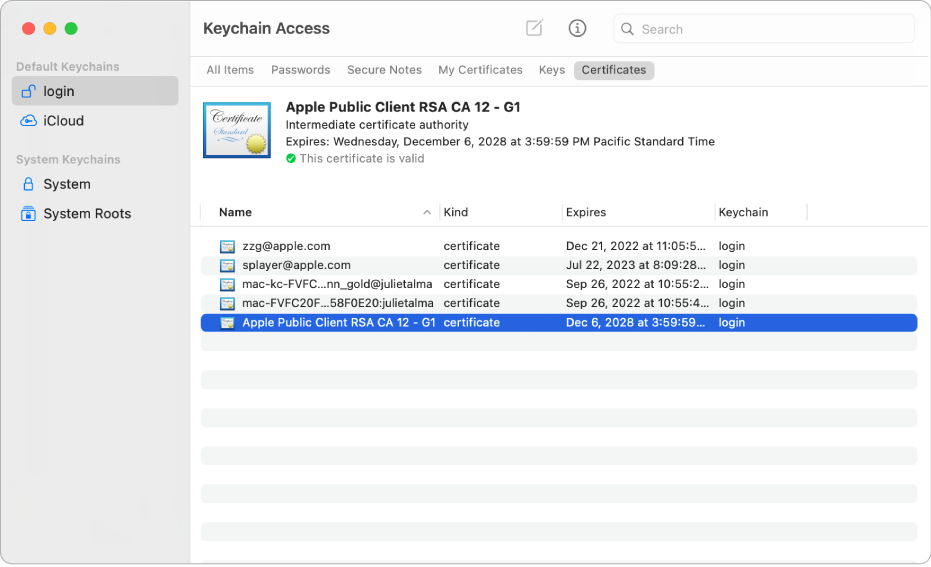
For example, Safari isn’t as strict, and the site loads fine using SSL in Safari. To get around this, you could easily switch to a different browser. Newer versions of Chrome do not allow you to bypass security issues anymore like they used to so if you want to access the site, you’ll need to make Chrome trust it. This is a good start, and this works in Safari (at the time of writing), but the problem with this is that there are many ways to create a self-signed SSL certificate, and Chrome is quite strict about what it accepts. Trust the certificate in macOS Keychain Access.Generate a certificate with that private key.Problem #2: my self-signed SSL certificate doesn’t workĪnother problem? – A big red lock that prevents you from doing local development in Google Chrome.
MAC KEYCHAIN ACCESS ADD ALTERNATIVE NAMES TO CERTIFICATE HOW TO
To solve this, you can follow a bunch of instructions on the internet on how to create an SSL certificate to use in Vagrant, which, at least in my case, resulted in a few failures, as follows. It doesn’t appear to do it for all domains on the internet, I realized later, but it did for this local domain.

The problem occurs because Chrome automatically redirects all domains (other than localhost) from using HTTP to using HTTPS. dev domain extension for local development. You can learn how to do that by reading my blog post. Instead of navigating to I wanted to be able to navigate to v. Problem #1: the website doesn’t loadįirst problem? – Chrome updated itself and now my local development environment won’t load.


Two words: SSL Chrome! Some recent changes with Chrome can cause breaking changes in local development environments.


 0 kommentar(er)
0 kommentar(er)
